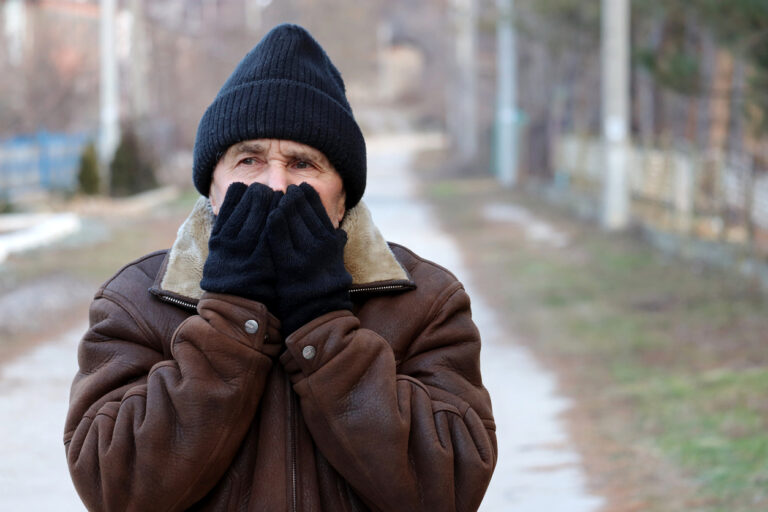This informational article was provided by our Masonic Value Network provider, Senior Helpers
With the arrival of winter, seniors face cold temperatures and slippery sidewalks that can affect their health and safety. Understanding how to navigate these challenges is vital to staying safe and healthy throughout the colder months. At Senior Helpers, in partnership with Masonic Communities, we are dedicated to providing seniors with the resources and support needed to thrive during winter.
Dressing for the Cold
Ensuring you dress appropriately can significantly affect how you handle the cold. Start with layering. Wearing several thin layers can effectively trap heat, keeping you warmer than one thick piece of clothing. Begin with a moisture-wicking base layer, add an insulating layer like fleece or wool, and finish with a waterproof outer layer to protect against rain and snow.
Footwear is equally important. Choose insulated boots with good traction to prevent slips and falls. Protect your extremities with accessories like earmuffs, scarves, and gloves. Remember, most body heat is lost through the head, so don’t forget a warm hat.
Preventing Hypothermia and Frostbite
Hypothermia and frostbite are serious conditions that can affect anyone. However, seniors are at higher risk due to several factors, such as chronic conditions, less efficient blood flow, or less fat under the skin. Recognizing the symptoms of hypothermia and frostbite early can be life-saving. Signs of hypothermia include shivering, confusion, slurred speech, and exhaustion. Frostbite symptoms may include white or grayish-yellow skin, numbness, and hard or waxy-looking skin.
Prevent these by dressing warmly and limiting time outdoors on frigid days. Stay dry, as moisture increases heat loss from the body. If you suspect hypothermia or frostbite, seek medical help immediately. Warm the person slowly and avoid hot drinks or direct heat, which can cause shock.
Maintaining a Warm Home Environment
Keeping your home warm is a priority during winter due to seniors’ increased vulnerability to cold-related health issues. Efficient heating solutions, like a central heating system with a thermostat, can maintain a consistent temperature. Aim for at least 68°F for occupied rooms.
Proper insulation is key to retaining heat and reducing energy costs. Seal windows and doors with weather stripping to keep the cold air out. For those using space heaters or fireplaces, follow safety guidelines carefully. Keep flammable objects away and ensure proper ventilation to prevent carbon monoxide buildup.
Staying Connected for Safety and Support
Winter can also lead to increased feelings of isolation, so staying connected with family and friends is vital. Regular check-ins, whether in person or by phone, can catch potential problems early and provide emotional support.
Utilize community resources and services for any additional help you may need. Many organizations offer transportation, meal delivery, and other services that can make winter more manageable. Embrace technology to stay connected. Video calls or social media can be excellent tools for maintaining relationships and receiving updates.

